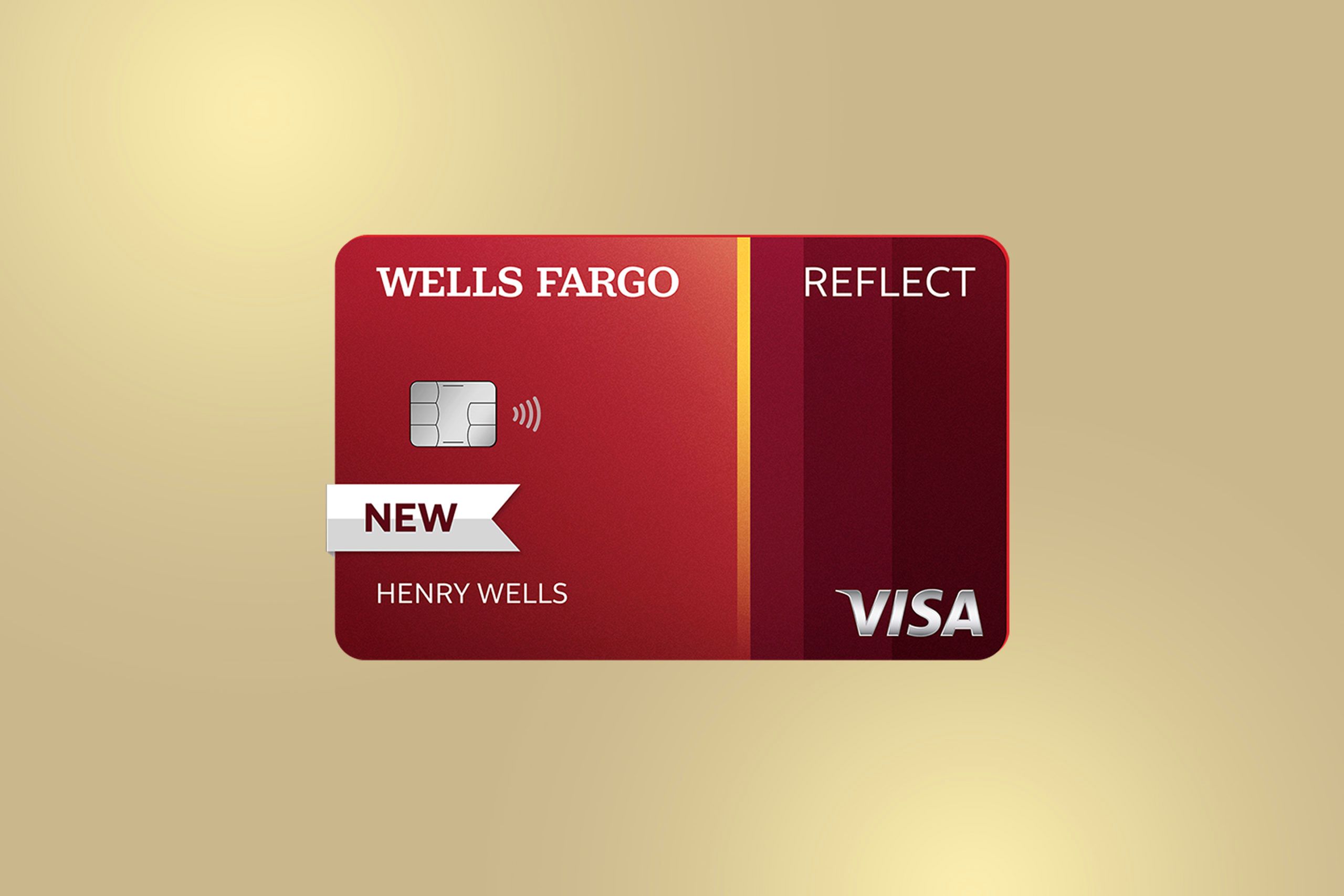

Finance
How To Increase Wells Fargo Credit Limit
Modified: January 15, 2024
Want to increase your Wells Fargo credit limit? Discover effective finance strategies to boost your credit limit and enhance your financial flexibility.
(Many of the links in this article redirect to a specific reviewed product. Your purchase of these products through affiliate links helps to generate commission for LiveWell, at no extra cost. Learn more)
Table of Contents
- Introduction
- Understanding Wells Fargo Credit Limit
- Factors Affecting Wells Fargo Credit Limit
- Evaluating Your Current Credit Limit
- Strategies to Increase Wells Fargo Credit Limit
- Requesting a Credit Limit Increase
- Tips to Improve Your Chances of Approval
- Monitoring Your Credit Utilization
- Alternatives to Increase Credit Capacity
- Conclusion
Introduction
Welcome to our comprehensive guide on how to increase your Wells Fargo credit limit. As a leading financial institution, Wells Fargo allows customers to have a credit limit on their credit cards. Your credit limit represents the maximum amount of money you can borrow on your credit card. A higher credit limit can offer you more flexibility and financial freedom, allowing you to make larger purchases or have a buffer for emergencies.
Understanding how to increase your Wells Fargo credit limit is crucial if you want to expand your purchasing power or improve your credit score. This guide will walk you through the factors that affect your credit limit, strategies to increase it, and tips to optimize your chances of approval.
Increasing your Wells Fargo credit limit is beneficial for several reasons. Firstly, a higher credit limit can improve your credit utilization ratio, which is a crucial factor in determining your credit score. Secondly, a higher credit limit can increase your purchasing power and allow you to take advantage of rewards programs and promotional offers. Lastly, a higher credit limit can provide you with a financial safety net in case of unexpected expenses or emergencies.
While increasing your credit limit with Wells Fargo is not guaranteed, implementing the strategies and tips outlined in this guide can significantly improve your chances. So let’s dive in and discover how to increase your Wells Fargo credit limit and unlock additional financial opportunities.
Understanding Wells Fargo Credit Limit
Before diving into the process of increasing your Wells Fargo credit limit, it’s essential to have a clear understanding of what a credit limit is and how it works. Your credit limit is the maximum amount of money that Wells Fargo allows you to borrow on your credit card. It represents the total debt you can accumulate on your card at any given time.
Wells Fargo determines your initial credit limit when you first apply for a credit card. The limit is based on various factors, including your credit history, income, and overall financial situation. The initial limit can vary from individual to individual, depending on these factors and Wells Fargo’s internal criteria.
Your credit limit plays a crucial role in managing your credit card usage. It impacts your credit utilization ratio, which is the percentage of your available credit that you are currently using. Maintaining a low credit utilization ratio (typically below 30%) is considered favorable for your credit score.
It’s important to note that your credit limit is not fixed and can be adjusted over time. Wells Fargo periodically reviews your credit card account and may offer you a credit limit increase based on several factors, such as your payment history, creditworthiness, and usage patterns. However, it’s also possible to take proactive steps to request a credit limit increase if you feel that your current limit does not align with your financial needs.
Increasing your credit limit can bring several benefits. It can provide you with more flexibility in managing your finances, as you’ll have access to a higher line of credit. This can be particularly helpful when making large purchases or covering unexpected expenses.
Furthermore, an increased credit limit can positively impact your credit score. As long as you maintain responsible credit card usage and manage your debt effectively, a higher credit limit can improve your credit utilization ratio, which accounts for a significant portion of your credit score calculation.
Now that we have a solid understanding of credit limits, let’s explore the factors that can affect your Wells Fargo credit limit and determine whether it’s time to evaluate your existing limit.
Factors Affecting Wells Fargo Credit Limit
When it comes to determining your Wells Fargo credit limit, several factors come into play. Understanding these factors can help you gauge the current status of your credit limit and assess whether it’s time to consider requesting an increase. Here are the key factors that Wells Fargo takes into account when evaluating and setting your credit limit:
- Credit History: Your credit history plays a significant role in determining your credit limit. Wells Fargo assesses factors such as your payment history, length of credit history, and any negative marks or delinquencies on your credit report. A solid credit history with a history of on-time payments is more likely to result in a higher credit limit.
- Income and Financial Stability: Wells Fargo may also consider your income and overall financial stability when setting your credit limit. A higher income and stable financial situation can indicate a better ability to manage credit, making you eligible for a higher limit.
- Credit Utilization Ratio: Your credit utilization ratio, which is the percentage of your available credit that you are currently using, is a crucial factor in determining your creditworthiness. Wells Fargo considers a lower utilization ratio as favorable. If you consistently max out your credit card or have a high utilization ratio, it may negatively impact your chances of a credit limit increase.
- Payment History: Your payment history, including any late payments or defaults, can affect your credit limit. Consistent on-time payments improve your creditworthiness and may lead to a higher credit limit over time.
- Existing Credit Limit: The current credit limit on your Wells Fargo credit card can also impact your chances of a credit limit increase. If your existing limit is already substantial, Wells Fargo may be hesitant to grant a further increase.
- Credit Score: While Wells Fargo doesn’t disclose the specific credit score requirements for a credit limit increase, it’s generally true that a higher credit score improves your chances. Maintaining good credit habits and regularly monitoring your credit score can contribute to increasing your credit limit.
It’s important to note that each individual’s circumstances are unique, and the weight given to these factors may vary. Wells Fargo considers a combination of these factors to assess your creditworthiness and determine your credit limit.
Now that we understand the key factors that impact your credit limit, let’s evaluate your current credit limit before exploring strategies to increase it.
Evaluating Your Current Credit Limit
Assessing your current credit limit is an essential step in determining whether it meets your needs or if it’s time to consider an increase. Evaluating your credit limit involves examining your spending habits, financial goals, and credit utilization ratio. Here are a few factors to consider when evaluating your current credit limit:
Spending Habits: Take a look at your monthly expenses and consider whether your current credit limit allows you to comfortably manage your spending. If you frequently find yourself reaching the limit or needing to make multiple payments throughout the month to accommodate your expenses, it may be an indication that your credit limit is too low.
Financial Goals: Assess your financial goals and consider whether your current credit limit aligns with those objectives. For example, if you’re planning a significant purchase or have upcoming expenses, having a higher credit limit can provide you with the necessary financial flexibility.
Credit Utilization Ratio: Calculate your credit utilization ratio, which is the percentage of your available credit that you are currently using. A high credit utilization ratio can negatively impact your credit score. If your current credit limit causes you to consistently exceed a recommended utilization ratio of 30%, it may be time to consider a credit limit increase.
Payment History: Examine your payment history and determine whether you have consistently made on-time payments. Demonstrating responsible credit card usage and a history of timely payments can increase your chances of a credit limit increase.
Comparison with Similar Credit Cards: Research and compare your current credit limit with similar credit cards from other issuers. This can provide you with a benchmark to assess whether your credit limit is in line with industry standards.
Credit Score and Creditworthiness: Evaluate your credit score and overall creditworthiness. If your credit score has improved since you obtained your Wells Fargo credit card or if you have made significant positive changes to your financial situation, it may be an indicator that you are eligible for a credit limit increase.
By evaluating your current credit limit, you can identify whether it meets your financial needs and determine if it’s time to consider requesting a credit limit increase. In the following sections, we will explore strategies to increase your Wells Fargo credit limit and provide tips to optimize your chances of approval.
Strategies to Increase Wells Fargo Credit Limit
If you feel that your current Wells Fargo credit limit is not sufficient for your needs, there are several strategies you can implement to increase it. While there is no guarantee of success, following these strategies can improve your chances of a credit limit increase:
- Make on-time payments: Consistently making on-time payments is crucial to building a positive credit history. It demonstrates responsible financial behavior and can increase your chances of a credit limit increase.
- Pay more than the minimum payment: Whenever possible, pay more than the minimum payment required on your credit card. This shows that you are financially capable and can handle a higher credit limit.
- Keep your credit utilization low: Aim to keep your credit utilization ratio below 30%. If you frequently max out your credit card or have a high utilization ratio, it may indicate a higher credit limit is needed to maintain a healthy ratio.
- Update your income information: If your income has increased since you opened your Wells Fargo credit card, update your income information with the bank. A higher income can positively impact your creditworthiness and make you eligible for a credit limit increase.
- Monitor your credit score: Regularly monitor your credit score and credit report. If you see an improvement in your credit score, it may be an indicator that you are in a better position to request a credit limit increase.
- Use your card frequently: Consistent usage of your Wells Fargo credit card, coupled with responsible repayment, can demonstrate to the bank that you are a reliable customer. However, be sure not to exceed your credit limit or accumulate excessive debt.
- Contact Wells Fargo: Reach out to Wells Fargo and inquire about the possibility of a credit limit increase. This can be done through a phone call or by submitting a request through their online banking platform. Be prepared to provide details about your current financial situation and reasons why you believe a credit limit increase is justified.
- Consider a balance transfer: If you have other credit cards with higher credit limits, you may want to consider transferring some of the balance to your Wells Fargo credit card. This can demonstrate to the bank that you are capable of handling a higher credit limit.
Remember, increasing your credit limit is ultimately at the discretion of Wells Fargo, and there is no guarantee of approval. By following these strategies and maintaining responsible credit card usage, you can improve your chances of securing a credit limit increase. In the next section, we will provide tips to further enhance your chances of approval.
Requesting a Credit Limit Increase
If you believe that your Wells Fargo credit limit needs to be increased, you can take the initiative to formally request a credit limit increase. Here is a step-by-step guide on how to go about it:
- Check eligibility: Before requesting a credit limit increase, ensure that you meet the criteria set by Wells Fargo. You should have a good payment history, a stable income, and a positive credit score.
- Gather necessary information: Collect relevant financial information, such as your monthly income, employment details, and any additional sources of income. This information will support your request for a credit limit increase.
- Reach out to Wells Fargo: Contact Wells Fargo through their customer service helpline or by visiting a branch. Explain that you would like to request a credit limit increase and provide them with the necessary information and documentation they may require.
- Explain your reasons: Clearly articulate the reasons why you believe a credit limit increase is justified. These reasons could include increased income, responsible credit card usage, or upcoming financial commitments.
- Be prepared for a credit check: Keep in mind that Wells Fargo may conduct a credit check as part of the evaluation process for a credit limit increase. Ensure that your credit report is accurate and up-to-date before making the request.
- Consider online request: Wells Fargo also offers the option to request a credit limit increase through their online banking platform. Log in to your account and navigate to the credit card section to find the option to request a credit limit increase. Fill out the required information and submit your request.
- Follow up: If your initial request is not approved, consider following up with Wells Fargo to inquire about the possibility of reconsideration or if there are any steps you can take to improve your chances in the future.
It’s important to note that Wells Fargo will consider multiple factors when evaluating your credit limit increase request. These factors include your credit history, payment behavior, income, and overall creditworthiness. While there is no guarantee of approval, taking the proactive step of requesting a credit limit increase can potentially lead to a positive outcome.
Now that you know how to request a credit limit increase, let’s explore tips that can help improve your chances of approval in the next section.
Tips to Improve Your Chances of Approval
When requesting a credit limit increase from Wells Fargo, there are several tips you can follow to enhance your chances of approval. By implementing these strategies, you can demonstrate to Wells Fargo that you are a responsible borrower and deserving of a higher credit limit. Here are some valuable tips to consider:
- Maintain a good credit history: Make sure you have a positive payment history by consistently making on-time payments for all your credit accounts. Late payments or delinquencies can negatively impact your chances of a credit limit increase.
- Reduce your debt: If you have outstanding balances on other credit cards or loans, consider paying them down before requesting a credit limit increase. This can improve your overall creditworthiness and show that you have better control over your finances.
- Show responsible credit card usage: Use your Wells Fargo credit card regularly but responsibly. Make charges on your card and pay off the balance in full each month. This showcases your ability to manage credit and builds trust with the bank.
- Monitor and improve your credit score: Regularly check your credit score and credit report for any errors or discrepancies. Take steps to improve your credit score by maintaining low credit card balances, making timely payments, and managing your overall debt.
- Update your income information: If your income has significantly increased since you applied for your Wells Fargo credit card, update your income information with the bank. A higher income can positively impact your creditworthiness and increase the likelihood of a credit limit increase.
- Be realistic with your request: When requesting a credit limit increase, consider asking for a reasonable amount. Setting a realistic expectation increases your chances of approval and shows that you are responsible in managing your credit.
- Highlight positive changes: If you have made positive changes in your financial situation, such as paying off other debts or increasing your income, be sure to mention these when requesting a credit limit increase. This demonstrates your commitment to financial responsibility.
- Practice patience: If your initial request for a credit limit increase is denied, don’t be discouraged. Continue to practice good financial habits, such as making on-time payments and demonstrating responsible credit card usage. Over time, your creditworthiness may improve, increasing the chances of a future credit limit increase.
By following these tips, you can enhance your chances of receiving a credit limit increase from Wells Fargo. Remember to be patient and continue practicing good financial habits to maintain a positive credit rating. In the next section, we will discuss the importance of monitoring your credit utilization and explore alternative ways to increase your credit capacity.
Monitoring Your Credit Utilization
Monitoring your credit utilization is crucial when it comes to managing your credit and increasing your credit limit. Credit utilization refers to the percentage of your available credit that you are currently using. Maintaining a low credit utilization ratio is seen positively by lenders and can improve your chances of a credit limit increase. Here are some important points to consider when monitoring your credit utilization:
- Understand the recommended ratio: It’s generally recommended to keep your overall credit utilization ratio below 30%. This means that if you have a total credit limit of $10,000, you should aim to keep your outstanding credit card balances below $3,000.
- Monitor individual card utilization: In addition to your overall credit utilization, it’s also important to monitor the utilization on each individual credit card. Keeping the utilization on each card below 30% can be advantageous for your credit score and increase the likelihood of a credit limit increase.
- Pay off balances in full: Whenever possible, strive to pay off your credit card balances in full each month. This not only helps to keep your debt in check but also demonstrates responsible credit card usage to lenders.
- Spread out your purchases: If you consistently use a large portion of your credit limit each month, it may be beneficial to spread out your purchases across multiple cards or make more frequent payments. This helps to keep your credit utilization lower and can positively impact your creditworthiness.
- Consider a lower-cost option: If you find yourself consistently struggling to keep your credit utilization low with your current credit card, you may want to consider applying for another credit card with a higher credit limit. This can offer you more available credit and decrease your overall utilization ratio.
- Regularly review your credit reports: It’s crucial to review your credit reports from all three major credit bureaus (Equifax, Experian, and TransUnion) to ensure accuracy. Incorrectly reported credit limits or balances can impact your credit utilization ratio, so it’s important to rectify any errors that you find.
- Monitor your credit score: Keep an eye on your credit score and track any changes. As you maintain a low credit utilization ratio and make on-time payments, your credit score is likely to improve. A higher credit score can position you favorably when requesting a credit limit increase.
By actively monitoring your credit utilization and implementing strategies to keep it low, you can demonstrate responsible credit card usage and increase the chances of a credit limit increase. In the next section, we will explore alternative options for increasing your credit capacity.
Alternatives to Increase Credit Capacity
If you’re looking to increase your credit capacity beyond your current credit limit, there are alternative options you can consider. Exploring these alternatives can provide you with additional financial flexibility and borrowing opportunities. Here are a few alternatives to increase your credit capacity:
- Apply for a new credit card: Research and apply for a new credit card that offers a higher credit limit. Having multiple credit cards can increase your overall available credit and improve your credit utilization ratio.
- Consider a personal line of credit: A personal line of credit is a flexible borrowing option that allows you to access funds as needed. This can serve as a supplementary credit source and increase your overall credit capacity.
- Apply for a credit limit increase with another issuer: If you have other credit cards with different issuers, you can request a credit limit increase from them. This can provide you with additional borrowing potential and improve your overall credit capacity.
- Explore a secured credit card: If you’re having difficulty obtaining a credit limit increase on your current cards or getting approved for new credit cards, consider applying for a secured credit card. This type of card requires a cash deposit as collateral, which can help increase your credit limit.
- Utilize a personal loan: If you need access to a higher amount of credit, consider applying for a personal loan. Personal loans typically offer fixed amounts and longer repayment terms, providing you with an increased credit capacity.
- Explore a balance transfer: If you have multiple credit cards with varying credit limits, you can transfer balances from cards with lower limits to those with higher limits. This can help consolidate your credit and increase your overall available credit.
- Consider a co-signer or authorized user: Having a co-signer or adding an authorized user to your credit card account can potentially increase your credit capacity. However, it’s important to carefully consider the implications and responsibilities involved in these arrangements.
While these alternatives can provide you with additional credit capacity, it’s important to approach them responsibly. Consider your financial situation, credit needs, and ability to manage multiple credit accounts before pursuing any of these options.
Remember, each alternative comes with its own set of terms, conditions, and potential impact on your credit. Be sure to carefully review and understand all terms before making any commitments.
With these alternative options in mind, you can explore ways to increase your credit capacity beyond your current credit limit. In the concluding section, we will summarize the crucial points covered in this guide on how to increase your Wells Fargo credit limit.
Conclusion
Increasing your Wells Fargo credit limit can provide you with greater financial flexibility, improve your credit utilization ratio, and open up new opportunities for managing your finances. While there is no guarantee of approval, following the strategies and tips outlined in this guide can enhance your chances of securing a credit limit increase.
By understanding the factors that influence your credit limit, evaluating your current credit limit, and implementing strategies to improve your creditworthiness, you can position yourself favorably when requesting a credit limit increase from Wells Fargo. Make sure to maintain a good credit history, keep your credit utilization low, and regularly monitor your credit score to stay on top of your financial health.
If you find that increasing your credit limit with Wells Fargo is not possible at the moment, exploring alternative options such as obtaining a new credit card, applying for a personal line of credit, or utilizing a personal loan can still provide you with increased credit capacity to meet your financial needs.
Remember, responsible credit card usage and financial management are key to maintaining a healthy credit profile. As you continue to demonstrate good credit habits over time, your chances of securing a future credit limit increase will likely improve.
Lastly, it’s important to keep in mind that increasing your credit limit should be done responsibly and aligned with your financial goals. Borrow only what you can comfortably repay and avoid accumulating excessive debt.
With a solid understanding of the factors affecting your credit limit and the strategies to increase it, you are now equipped to take proactive steps towards increasing your Wells Fargo credit limit and unlocking greater financial possibilities.














